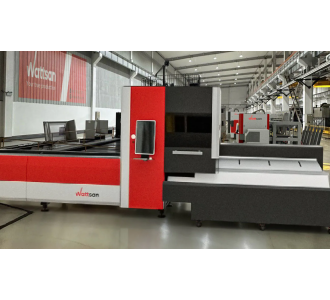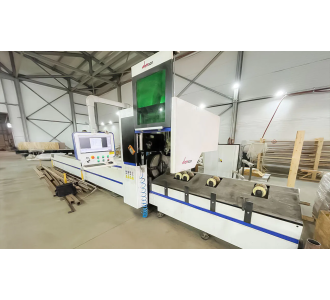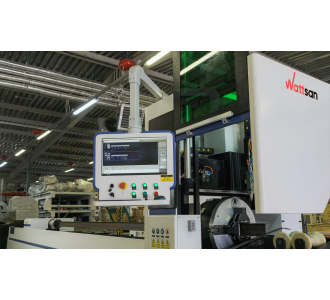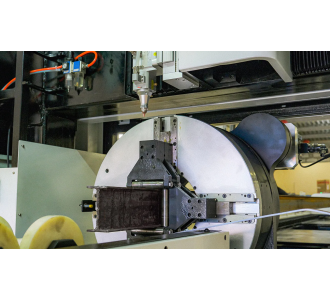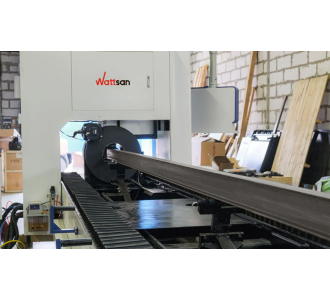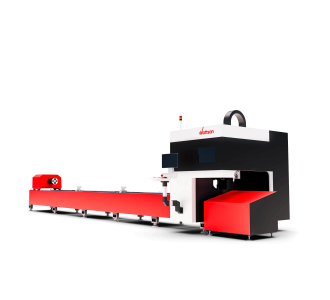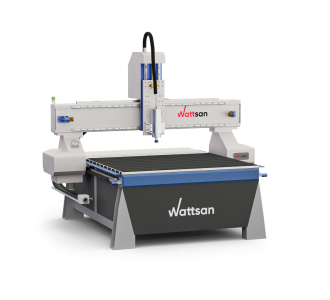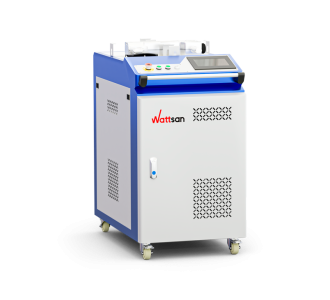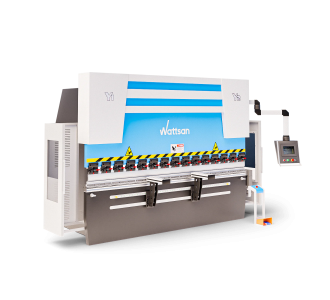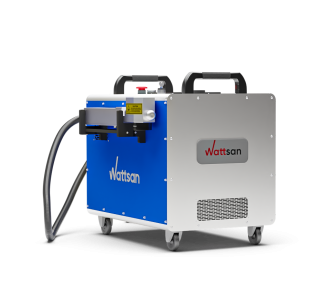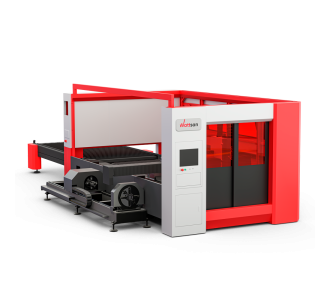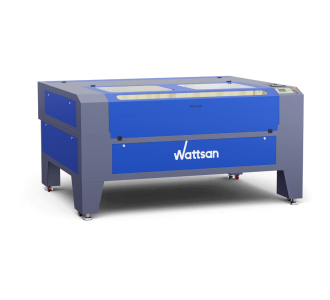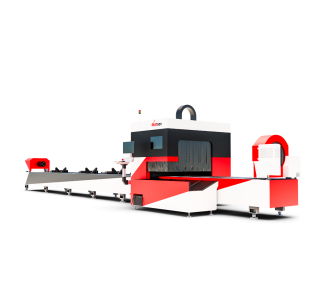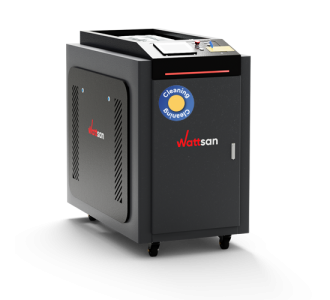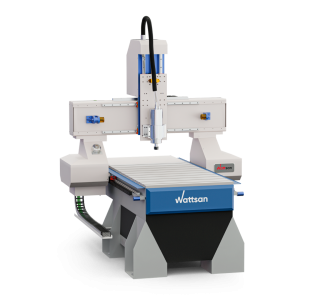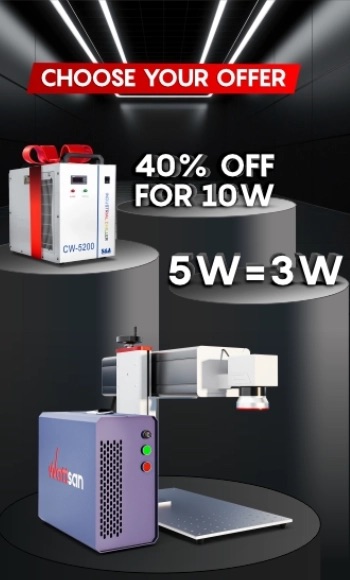Laserowa maszyna do cięcia rur Wattsan Heavy Duty
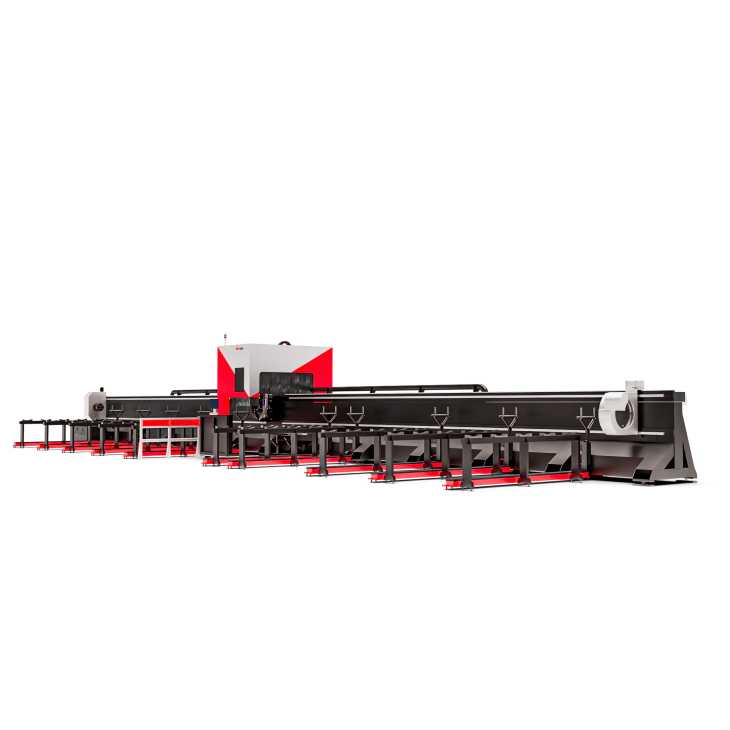
Brief of Laser Tube Cutting Machine Wattsan Heavy Duty
Laser Pipe Cutting Machine Wattsan Heavy Duty
The Wattsan Heavy Duty is a 3-chuck tube laser cutting machine, equipped with a swivel laser head and full automatic tube feeding as standard. It is used for all kind of tubes. The machine can cut carbon and stainless steel tube, copper, aluminum alloy tube, and other metals.
-
Protective cabin
The protective cabin ensures safe operation and eliminates contamination. The viewing window is made of special protective glass according to European CE standards.
The smoke generated by cutting passes through the filter system inside the cabin, thus providing an environmentally friendly cutting without polluting the external environment.

-
Front, back and center chucks
A distinctive feature of Wattsan tube cutter is the presence of 3 pneumatic clamping chucks (front, back and center). The chucks rotate synchronously and move synchronously or individually.
The design of the machine is designed for reliable fixation of thick-walled pipes with a diameter of up to 640 mm, weighing up to 3000 kg (the machine can be equipped with chucks of the appropriate diameters).

-
Servo Follow-up
The auxiliary support is controlled by an independent servo motor to move up and down, mainly to perform auxiliary support for excessive deformation of long cut pipes. Especially for small diameter pipes. When the rear chuck is moved to the appropriate position, the auxiliary support can be lowered to avoiance.

-
Servo motors Yaskawa
The Wattsan tube cutter is equipped with Yaskawa servo motors. The advantages of servo motors include: 2 times increased reliability margin, easy replacement in case of breakdown, minimal vibration, lightweight design, acceleration up to 0.6G and max chuck rotation speed up to 80 r/min.

-
Bevel cutting up to 45 degrees
The Wattsan Heavy Duty equipped with a swivel cutting head for cutting pipes and punching holes up to 45 degrees.
This function is indispensable for the subsequent welding of butt-to-butt pipes, beveled pipes, short pipes, products connected with fixing bolts. Will increase the demand for products and increase the range of machined parts.

-
Loading and unloading system
Heavy duty equipped with loading and unloading system of heavy tubes, efficient and time-saving, reduces production preparation time. Significantly improves operational safety, saves labour and reduces production costs.
This system can support tube weights up to 3000 kg and diameters up to 640 mm

System antywibracyjny
Procedura zakupu
-
Wybór sprzętu
Pomagamy w doborze maszyny dopasowanej do Twoich potrzeb
-
Wysłanie faktury
Uzgadniamy komplet maszyn i przesłanie faktury z ostatecznym kosztem sprzętu.
-
Płatność
W całości, jeśli maszyna jest na magazynie. 50% z góry 50% przy dostawie, jeśli maszyna nie jest na stanie.
-
Sprawdzamy maszynę
Trzyetapowa kontrola jakości: w fabryce Wattsan, w naszym magazynie w Holandii, przed dostawą.
-
Dostawa lub odbiór
Firma transportowa lub Ty odbierasz maszynę z naszego magazynu.
-
Uruchomienie sprzętu
Jesteśmy tutaj, aby Ci pomóc, gdy tylko będziesz potrzebować wsparcia.
Głowica laserowa do Twoich zadań
Doświadczenia entuzjastycznych blogerów
Charakterystyka techniczna
Zadawaj pytania
-
Laser światłowodowy najlepiej nadaje się do cięcia metalu, ale specjalnie wyposażony laser CO2 z lampą laserową o dużej mocy może być również odpowiedni do tego celu. Należy jednak pamiętać, że grubość metalu do cięcia laserem CO2 jest ograniczona do 1,5 mm, podczas gdy laser światłowodowy może ciąć do 25 mm.
-
Koszt godziny cięcia laserowego zależy nie tylko od mocy maszyny laserowej i szybkości jej działania, ale także od szeregu innych czynników, takich jak: umiejętności zawodowe operatora maszyny, koszt wynajmu pomieszczenia produkcyjnego, koszt i zużycie energii elektrycznej, koszt samego materiału, ilość złomu i przestoje maszyny i wiele innych. Aby jednoznacznie odpowiedzieć na pytanie o koszt godziny cięcia laserowego, konieczne jest uwzględnienie wszystkich tych parametrów.
-
Zogniskowana wiązka laserowa jest przykładana do powierzchni metalu, w wyniku czego topi się, a stopiony materiał jest wydmuchiwany ze strefy cięcia za pomocą gazu pomocniczego.
-
Moc emitera lasera zależy od grubości obrabianego materiału i żądanej prędkości obróbki. Na przykład emiter o mocy 1 kW będzie ciął stal nierdzewną o grubości 1 mm z prędkością 13 m/min, a emiter o mocy 3 kW będzie ciął ten sam materiał z prędkością około 35 m/min. Tutaj wszystko zależy od budżetu i celowości wykorzystania maksymalnej możliwej wydajności. Chociaż można powiedzieć, że w dzisiejszych konkurencyjnych realiach nie ma sensu kupować maszyny laserowej o mocy mniejszej niż 1 kW.
